
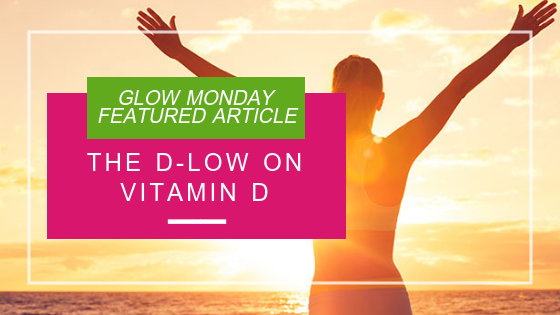
The D-low on Vitamin D
However, the truth is, this often-misunderstood “vitamin” is not a vitamin — it is a prohormone. Crazy, right?! Even though we know this, we still lovingly refer to this “hormone” by its maiden name. Prohormones are substances that the body converts to a hormone.
In fact, unlike other vitamins, only about 10 percent of the vitamin D the body needs comes from food (such as dairy products and oily fish), and the rest the body makes for itself. Understanding this hormone and the role it plays in the body will help you make informed health decisions.
Vitamin D, produced by the kidneys, is a hormone that controls blood calcium concentration and impacts the immune system. Vitamin D comes from two sources: endogenous, which is produced in the skin on exposure to sunlight, and exogenous, which is ingested in foods and supplements.
The chemical structures of the types of vitamin D are slightly different, and they are named Vitamin D2 (ergocalciferol, which comes from plants) and Vitamin D3 (cholecalciferol, which comes from animals).
The D2 form is found in fortified foods and in most vitamin preparations and supplements. Vitamin D3 is the form produced in the body and is also used in some supplements. Vitamin D2 and D3 are equally effective when they are converted by the liver and the kidney into the active form, 1,25-dihydroxyvitamin D or Calcitriol.The body makes vitamin D in a chemical reaction that occurs when sunlight hits the skin. This reaction produces cholecalciferol, and the liver converts it to calcidiol. The kidneys then convert the substance to calcitriol, which is the active form of the hormone in the body.
Vitamin D has its effects by binding to a protein (called the vitamin D receptor). This receptor is present in nearly every cell and affects many different body processes.
So, you’re probably wondering why vitamin D is really that important for our bodies. Vitamin D supports many functions:
- Regulates calcium and phosphorus levels in our blood stream
- Stimulates calcification of the bone – in other words, it gives us strong bones!
- Increases absorption of calcium from the intestines (helps us absorb calcium from food)
- Decreases calcium excretion from the kidneys (keeps us from losing calcium we need)
- Provides serious immune support and protects from autoimmunity
- Helps to regulate blood pressure
- Fights against depression
- Reduces severity of hot flashes
- Works in the body with many other nutrients including Calcium and Vitamin K2
There are many signs and symptoms within the body that could indicate a vitamin D deficiency including osteoporosis, osteopenia, breast or colon cancer, heart disease, inflammation, autoimmune conditions (multiple sclerosis, rheumatoid arthritis, Hashimoto’s, lupus, etc.), lowered immune function, depression and insulin resistance.
Sometimes a Vitamin D deficiency is only marked by feeling a bit tired or sluggish, feeling down or in low spirits regularly, or just getting sick often.
It’s important to note that while these symptoms might indicate vitamin or nutrient deficiencies, there may also be other health conditions or issues at play. The easiest way to know if you are low when it comes to vitamin D is to ask your health practitioner to do a blood test to find out!
If you don’t have a doctor who can order the simple test for you, you can do order one yourself inexpensively here from our lab partner, Ulta Labs.
Know your numbers, symptoms are not normal
Perhaps you’ve had your Vitamin D checked on your last blood test, and the doctor gave you a clean bill of health, but you still have many of the symptoms listed above. You may be deficient in Vitamin D. You see, the “normal” range for Vitamin D across the country can range from 20-100 ng/ml, but when we are looking for symptom free, optimal health, we want to see levels between 60 and 90 ng/ml
Reasons for Low Vitamin D Levels
As you know, at Glow Natural Wellness, it isn’t enough just to know that numbers are low, we want to know why.
- You don’t consume the recommended levels of the vitamin over time. This is likely if you follow a strict vegan diet, because most of the natural sources are animal-based, including fish and fish oils, egg yolks, fortified milk, and beef liver.
- Your exposure to sunlight is limited. Because the body makes vitamin D when your skin is exposed to sunlight, you may be at risk of deficiency if you are homebound, live in northern latitudes, wear long robes or head coverings for religious reasons, or have an occupation that prevents sun exposure.
- You have dark skin. The pigment melanin reduces the skin’s ability to make vitamin D in response to sunlight exposure. Some studies show that older adults with darker skin are at high risk of vitamin D deficiency.
- Your kidneys cannot convert vitamin D to its active form. Low levels of vitamin D can be a sign of kidney dysfunction.
- Your digestive tract cannot adequately absorb vitamin D. Certain medical problems, including Crohn’s Disease, cystic fibrosis, and celiac disease, can affect your intestine’s ability to absorb vitamin D from the food you eat.
- You are obese. Vitamin D is extracted from the blood by fat cells, altering its release into the circulation. People with a body mass index of 30 or greater often have low blood levels of vitamin D.
How to Boost Vitamin D
Luckily there are plenty of low cost, easy to implement ways to boost your Vitamin D levels.

Sunlight is the number one way to boost your natural Vitamin D. This means you’ve got to get outside in nature, preferably during midday when the sun’s rays are strongest. Keep in mind that you need to have skin exposed – as much as the weather allows. So show those arms, and be sure to skip the sunscreen. Sunscreen will prevent those rays from doing their job.
How long you need to spend soaking up the vitamin D rich rays depends on your complexion. Skin pigmentation affects how much radiation your skin absorbs. The darker the skin, the more it’s protected against skin cancer but the less able it is to absorb UV-B rays. If you’re a fair-skinned person, spending a few minutes outside in the middle of the day without sunscreen would be enough to get vitamin D. If you’re already tanned or of Hispanic origin, you need maybe 15 to 20 minutes. Black skin may require six times the sun exposure to make the same vitamin D levels as a very fair-skinned person.
Even if you jog in the early morning on a bright, sunny day, you may not produce enough vitamin D because there are not sufficient UV rays early in the morning. Lunch time exposure is best. *Note, some people have a genetic variant that does not allow for the conversion of sunlight into vitamin D, if you fall in this population, you will need to be very mindful of your levels, consider supplementation.
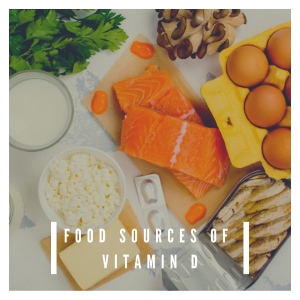
Another great source of vitamin D is fatty fish such as salmon, trout, mackerel, eel and tuna (canned tuna or sardines both contain vitamin D). And on the plus side, you also get heart-healthy omega-3 fatty acids from fish.
Eggs are also another place to find your vitamin D, however, they will only give you about 10% of what you need for the day.
You can also find it in beef liver and cod liver oil. Cod liver oil could be a better choice than beef liver since it tastes better and is often flavored with mint or citrus. Both cod liver oil and beef liver can be found in capsule form.
And…last but not least, if you’re not getting enough vitamin D, supplementation may be the way to go! It’s important to take the D3 form, and it needs to be taken with vitamin K2 to help absorption.
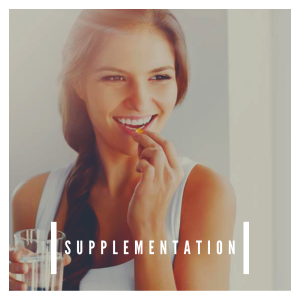
When supplementing, always opt for pharmaceutical grade sources. Click below for our preferred Vitamin D supplement from partner FullScript.
This week’s challenge is rather simple…. make sure you’re focused on getting enough vitamin D all week either through food, supplements, or just by spending more time outside in the sun!
- Posted
- in Natural Medicine
- By Michelle




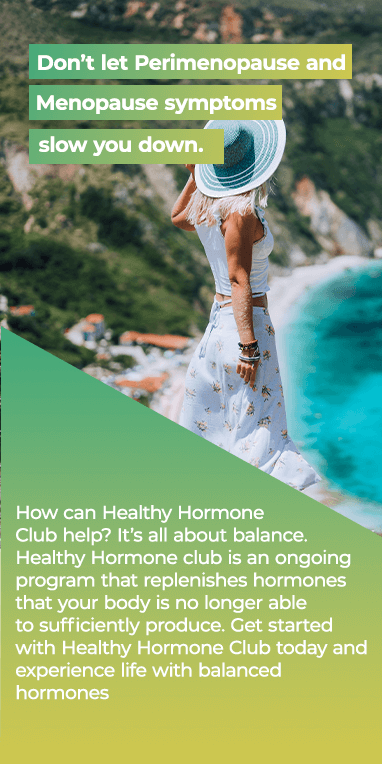
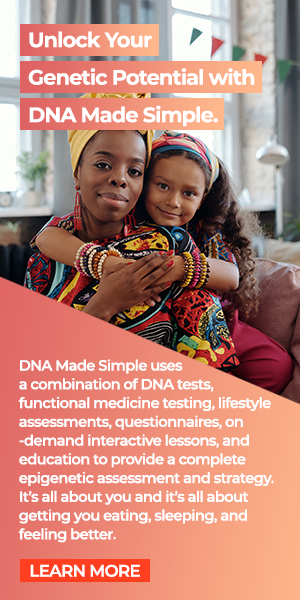
110 Comments
This artical is very informative.
This artical is very informative.
This artical is very informative.
Vitamin D is confusing…. At my last test, it was 117 with a reference range of 75-200 yet
1 1/2 years ago when I was taking 10000 iu per day, I just fell into the range. What is up with that?
Vitamin D is confusing…. At my last test, it was 117 with a reference range of 75-200 yet
1 1/2 years ago when I was taking 10000 iu per day, I just fell into the range. What is up with that?
Vitamin D is confusing…. At my last test, it was 117 with a reference range of 75-200 yet
1 1/2 years ago when I was taking 10000 iu per day, I just fell into the range. What is up with that?
Great & very informative article!!
Great & very informative article!!
Great & very informative article!!
I have read researchers have suggested raising the RDA on vitamin D to 10,000iu. Do you think this is a good level to take or too much? The RDA on a lot of items are very very low, iodine and vitamin c for example. Do you have a list of all the true levels needed to remain at a healthy level?
I have read researchers have suggested raising the RDA on vitamin D to 10,000iu. Do you think this is a good level to take or too much? The RDA on a lot of items are very very low, iodine and vitamin c for example. Do you have a list of all the true levels needed to remain at a healthy level?
I have read researchers have suggested raising the RDA on vitamin D to 10,000iu. Do you think this is a good level to take or too much? The RDA on a lot of items are very very low, iodine and vitamin c for example. Do you have a list of all the true levels needed to remain at a healthy level?
Is there a recommended Vitamin A to D ratio that good cod liver oil should have? Some cod liver oils have barely any Vitamin D in them. Do you have any brands you trust? ie aren’t rancid, have good A to D ratios, Vit A & D are natural and not added in by the manufacturer.
Is there a recommended Vitamin A to D ratio that good cod liver oil should have? Some cod liver oils have barely any Vitamin D in them. Do you have any brands you trust? ie aren’t rancid, have good A to D ratios, Vit A & D are natural and not added in by the manufacturer.
Is there a recommended Vitamin A to D ratio that good cod liver oil should have? Some cod liver oils have barely any Vitamin D in them. Do you have any brands you trust? ie aren’t rancid, have good A to D ratios, Vit A & D are natural and not added in by the manufacturer.
Your article helped me a lot, is there any more related content? Thanks! https://accounts.binance.com/lv/register?ref=OMM3XK51
A round of applause for your article post.Really thank you! Will read on…
Very good article.Really looking forward to read more. Awesome.
Great, thanks for sharing this blog.Really thank you! Awesome.
Thanks-a-mundo for the post.Much thanks again. Will read on…
A big thank you for your post.Really looking forward to read more. Awesome.
Major thanks for the article.Really thank you! Fantastic.
Thanks a lot for the blog post.Much thanks again. Awesome.
Thanks for the post.Really looking forward to read more. Awesome.
Thanks for sharing, this is a fantastic article.Really thank you! Great.
Enjoyed every bit of your blog post.Really thank you! Cool.
Really informative article post.Really thank you! Awesome.
Hey, thanks for the article post.Thanks Again. Awesome.
I think this is a real great article post.Much thanks again. Great.
wow, awesome article post.Really looking forward to read more. Awesome.
Wow, great blog article.Thanks Again.
I think this is a real great blog post.Much thanks again. Cool.
wow, awesome blog.Really thank you!
Really enjoyed this blog post.Really thank you! Fantastic.
Thanks-a-mundo for the blog.Really looking forward to read more. Awesome.
Looking forward to reading more. Great article.Really thank you! Want more.
Appreciate you sharing, great blog post.Much thanks again. Keep writing.
I appreciate you sharing this blog post.Much thanks again. Great.
Thanks so much for the post.Thanks Again. Much obliged.
Thanks-a-mundo for the blog post.Much thanks again. Keep writing.
Major thankies for the article post.Thanks Again. Cool.
Very neat blog post. Cool.
I truly appreciate this article post.Thanks Again. Want more.
Thanks for sharing, this is a fantastic article.Really thank you! Awesome.
Really appreciate you sharing this article post.Really thank you! Really Great.
Really informative blog.Really thank you!
I appreciate you sharing this post.Thanks Again. Really Great.
Very good blog post.Thanks Again. Cool.
Really appreciate you sharing this article post.Really thank you! Fantastic.
I am so grateful for your post.Thanks Again.
I appreciate you sharing this blog article.Much thanks again.
Thanks again for the blog post.Thanks Again. Much obliged.
I think this is a real great post.Really looking forward to read more. Awesome.
Say, you got a nice blog article.Really thank you! Great.
Major thankies for the blog article.Really thank you! Awesome.
Thank you for your article.Thanks Again. Want more.
A big thank you for your blog post. Want more.
I think this is a real great article post. Will read on…
Really enjoyed this blog.Really looking forward to read more. Great.
Very neat blog.Much thanks again.
Muchos Gracias for your article.Really looking forward to read more. Want more.
Very neat article.Thanks Again. Really Great.
I think this is a real great article post.Thanks Again. Really Cool.
Hey, thanks for the blog.Really looking forward to read more. Awesome.
Awesome post.Really thank you! Much obliged.
I value the blog article.Much thanks again. Really Great.
Thanks for sharing, this is a fantastic post.Really looking forward to read more. Will read on…
Very good blog article.Much thanks again. Really Great.
I think this is a real great blog post. Really Cool.
A round of applause for your blog article.Much thanks again. Cool.
Fantastic post.Much thanks again.
Very informative article post.Really thank you! Great.
I truly appreciate this post. Really Cool.
I value the blog.Thanks Again. Really Great.
A big thank you for your article.Really thank you! Fantastic.
Thanks a lot for the blog post.Much thanks again. Great.
Wow, great article post.Much thanks again.
Major thanks for the blog article.Thanks Again. Cool.
Fantastic post.Much thanks again. Fantastic.
Thank you for your article. Cool.
Fantastic blog.Really thank you! Really Great.
Major thankies for the blog.Much thanks again. Will read on…
Im grateful for the article.Really looking forward to read more. Will read on…
I really like and appreciate your post.Much thanks again. Cool.
Thank you ever so for you post.Much thanks again. Keep writing.
Great, thanks for sharing this article.Thanks Again. Much obliged.
Very neat blog post.Thanks Again. Really Cool.
Really informative blog. Really Cool.
Really appreciate you sharing this article.Thanks Again. Will read on…
I loved your blog article.Much thanks again. Great.
Great blog post.Really looking forward to read more. Cool.
Enjoyed every bit of your article.Really looking forward to read more. Keep writing.
Thanks a lot for the article.Really thank you! Will read on…
I appreciate you sharing this post.Thanks Again. Cool.
I really like and appreciate your blog post.Really thank you! Want more.
Really appreciate you sharing this blog post.Really thank you! Fantastic.
Thank you ever so for you post.Really looking forward to read more. Keep writing.
Thanks-a-mundo for the blog.Much thanks again. Fantastic.
A big thank you for your blog.Really thank you! Fantastic.
Great, thanks for sharing this post.Really thank you! Awesome.
Hey, thanks for the article post.Really looking forward to read more. Much obliged.
Very neat article post. Really Cool.
wow, awesome article post.Much thanks again. Want more.
Fantastic blog.Much thanks again. Great.
Enjoyed every bit of your blog.Really thank you! Awesome.
Thanks a lot for the blog. Much obliged.
Thank you ever so for you blog post.Much thanks again. Much obliged.
Very good blog post.Really looking forward to read more. Awesome.
Thank you ever so for you blog article. Great.
I appreciate you sharing this blog post. Awesome.